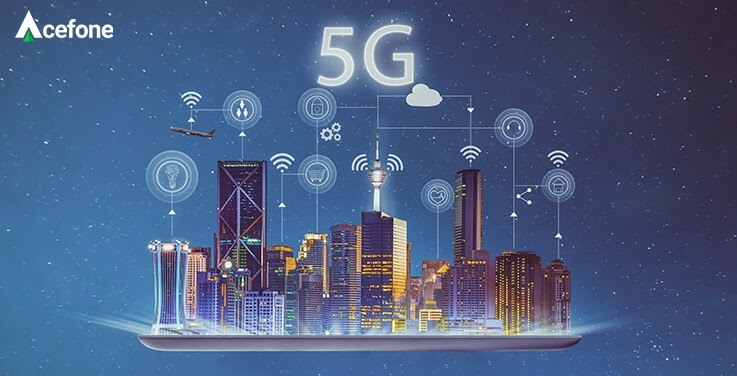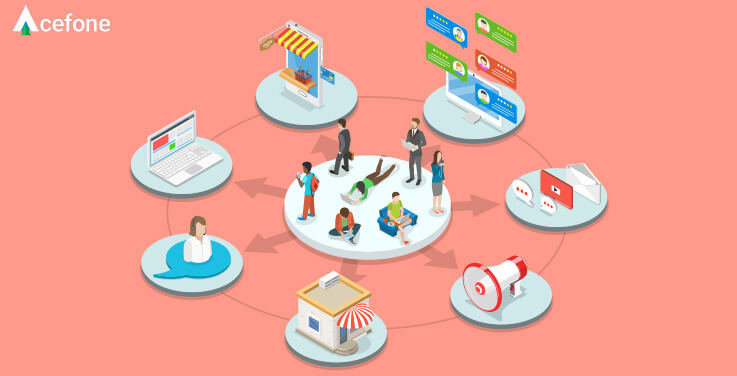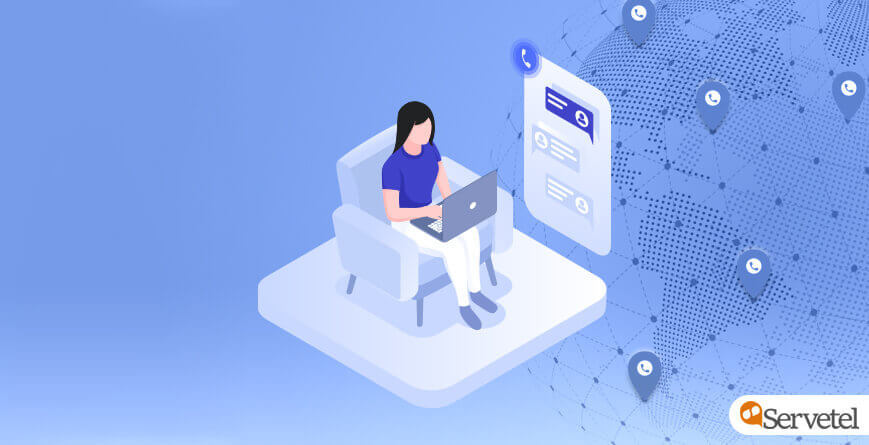Patience is a virtue very few possess. We may not know what we might want at times, but we do always know that we want it fast. Perhaps that’s why we’ve grown tremendously fast over the past few years and developed advanced technologies.
Fast-forward to today, and we see an interconnected world where everything is on our fingertips. Of course, as with all other technologies, speed and quality are paramount here as well. 5G promises all that and much more.
We’ve all been waiting for this technology to take over. But did you know that it’s more than just a faster Internet connection? In fact, 5G technology can transform business operations by empowering cloud-based communications.
Essentially, it will facilitate working from home and help maintain stellar internal communications. Let’s dive deeper.
So what is 5G?
5G refers to the fifth generation of cellular network technology in telecommunication. Succeeding 4G, it was introduced to the world in 2019 and provides high-speed connectivity. 5G offers higher bandwidths, and therefore, greater download speeds—reaching 10 gigabits per second (Gbit/s).
This is a whopping 10 times faster than your 4G network! So, if downloading a movie on 4G takes 10 minutes, with 5G you could have it ready in just one minute.
This speed is possible because 5G operates using shorter wavelengths known as millimetre waves. These waves are very short which is why they’re able to carry data faster. However, a shorter wave also means shorter range. So, while your 4G network could have a range of around 16km, 5G is limited to nearly 300 metres. Thus, major advancements and infrastructural upgradation are still required to make this technology completely successful.
Nevertheless, 5G is all set to take the world by storm. It is predicted by Counterpoint that the global subscription for 5G will increase to over 1.7 billion by the year 2023. This will account for more than 20% of the world’s entire mobile data traffic.
Benefits of 5G for cloud and beyond
Let’s discuss what this technology offers and how it’ll change things all around us.
1. Higher Internet speed
We’ve discussed this abundantly—as the most-highlighted aspect of 5G connectivity. In fact, with further development, it’s expected to reach speeds as high as 100 times that of 4G.
Faster speed means you can connect remotely and run daily operations effortlessly. You’ll be able to download important files instantly, share large sets of data with total ease and overall, experience increased productivity.
This benefit isn’t just for remote employees. Even on-premise operations improve as the tools and technologies used by the team are enhanced. Unified communication tools can be made more reliable and productive by employing this technology. Faster and better internal collaboration paves the way for successful business endeavours.
2. Low latency
Latency rate refers to the delay between sending and receiving information. This lag is significantly smaller in 5G—dropping from 200 milliseconds in 4G to merely 1 millisecond. That’s equal to one-thousandth of a second and, essentially, is negligible.
So, what does low latency mean for you?
Think of it this way: the average human has a reaction time of around 250 milliseconds. A 5G network reacts in 1 ms, which is 250 times faster than us.
With low latency, you can experience real-time interactions via cloud-based services with no lag at all. This ability is extremely crucial in certain industries. For example, zero lag will enhance the remote operation of heavy machinery with absolute accuracy and safety. The same can be said for remote surgeries.
Even within the realm of business communications, heavy communication infrastructure and large-sized business applications can be operated and maintained remotely with 5G.
3. Making AI even smarter
The faster reaction time of the 5G network will come in handy for artificial intelligence tools. So, if you have a chatbot for communicating with potential customers, it can hold swift and engaging conversations without breaking the flow.
The high speed also aids in processing large data sets to quickly retrieve important information.
Similarly, it lets systems ingest and make sense of high volumes of data at an unprecedented transmission rate.
When employees are working remotely and unable to collaborate in an office space, AI can take over many mundane routines, thereby freeing the staff to focus on more critical tasks.
Additionally, 5G is expected to enhance VR (virtual reality) and AR (augmented reality) applications significantly. Integrating these technologies will transform business processes in many industries, from retail to healthcare, hospitality, and much more.
4. Faster remote work with edge computing
Whether you’re stuck at home during a lockdown or traversing the world—out of office should not mean out of touch. You can stay connected with your colleagues remotely via cloud services empowered by 5G connectivity.
Your home appliances, like sensor-based voice assistants and home automation machines, can work smoother and transfer data seamlessly. This allows you to enjoy the same comfort and productivity of work as you would in the physical office.
Additionally, working on the go is much easier when you have a super-strong cellular network like 5G. You can, therefore, enjoy high speed, low latency conversations and perform tasks efficiently wherever you are.
5. Low input, high rewards
That’s the motto 5G technology follows.
There are two aspects to this point. Firstly, you can lower your power consumption and ensure that your connected devices work for much longer without human intervention. 5G equipment specifications require that energy consumption be reduced 90% from what 4G uses.
By increasing energy efficiency, you have great potential to harness the power that is otherwise wasted. To help you understand contextually, take this example: one of the energy efficiency goals of 5G is to increase smartphone battery life to three days.
The other aspect is that of providing for multiple devices with a single network. With 5G’s capabilities in terms of speed and bandwidth, it can accommodate 100 times the devices a 4G network can. So for every sq. km, 5G can support 1 million devices.
This basically guarantees that your office network can support all the employees and their different devices, applications and equipment—with a lot of bandwidth to spare.
Conclusion
There might still be a few questions brewing in your mind. Where has 5G been implemented? When can we expect it commercially?
The first 5G provider for cellular devices was a contested title, but AT&T and Verizon in the USA, and SK Telecom and KT corp from South Korea were a few of the first companies to launch their efforts.
Very recently, Realme announced that it will be one of the first brands to launch a 5G smartphone with Mediatek’s new Dimension 1200 flagship 5G smartphone chip.
One thing that all of us can agree on is that 5G is the future, and the future is already here. It’s only going to get greater and reveal more functionalities that will revolutionise business processes forever. If you’re looking for a reliable 5G provider to enhance your remote work and business connectivity, Cybernews has reviewed top internet service providers. You may find their Verizon 5G internet review particularly helpful in choosing the right option for your needs.
Wondering if your office communication systems will be compatible with the new wave of tech innovations? Do you want to learn how to optimise your remote work operations?
Get on a call with our industry experts at 1888-859-0450 or drop an email at [email protected], and we’ll get right back to you.














